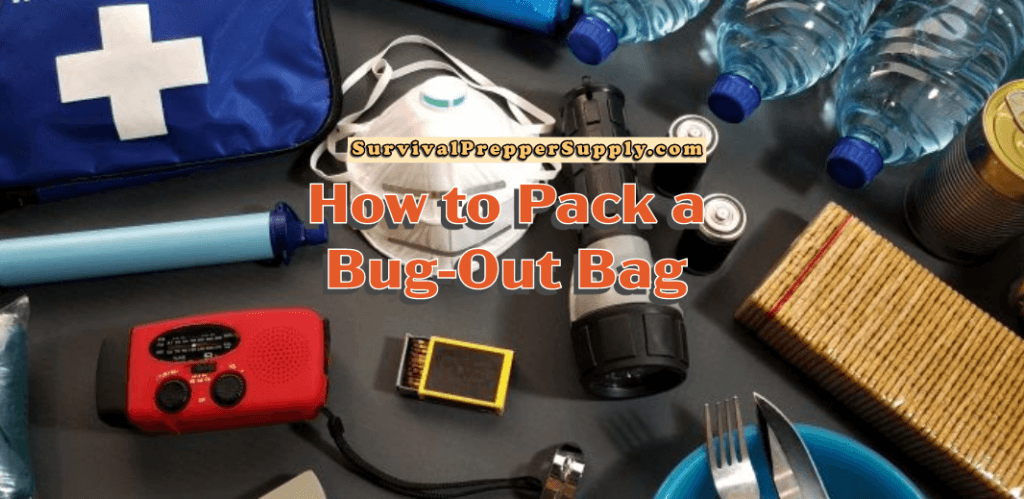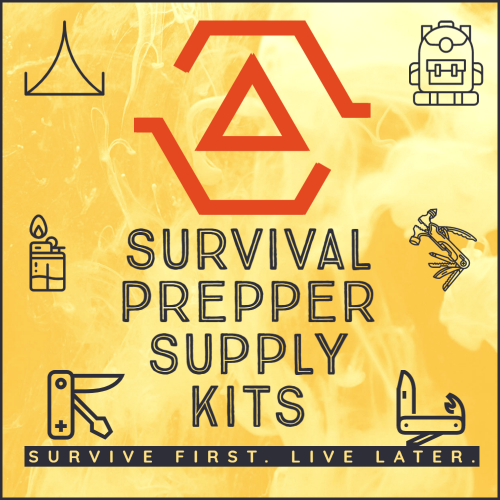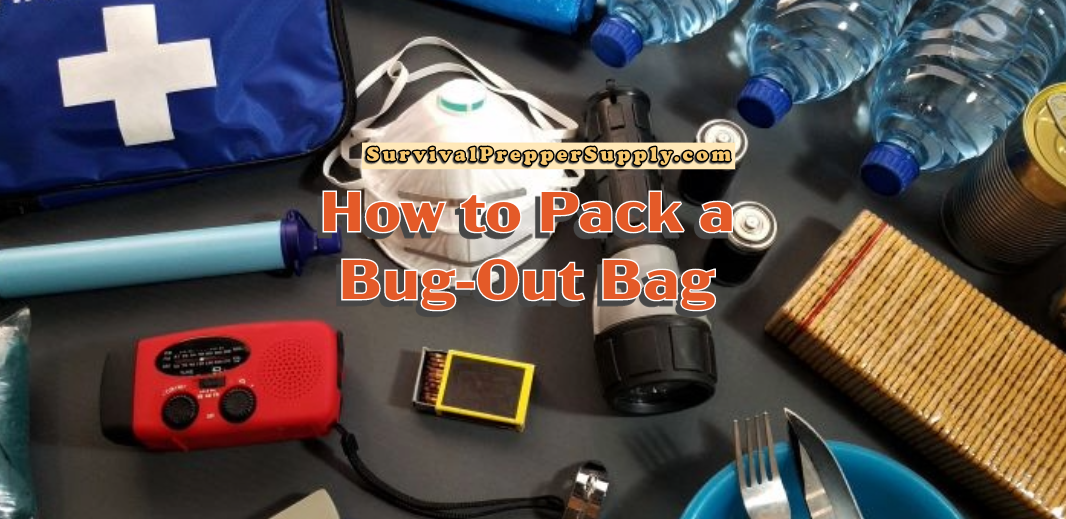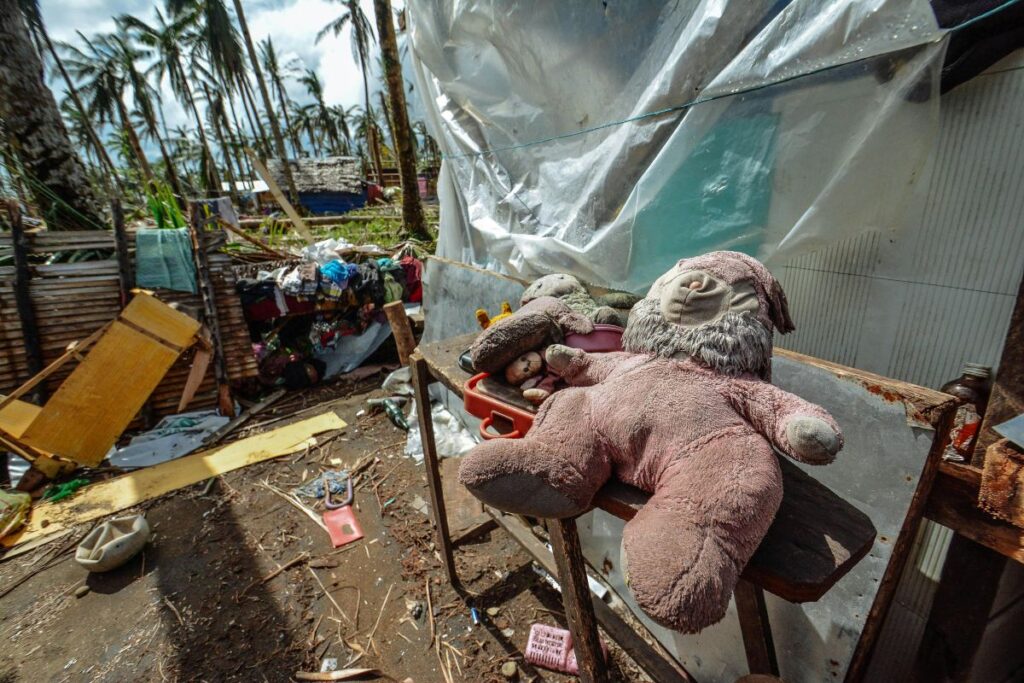Essential Tips and Comprehensive Survival Prepper Supply Checklist
Introduction:

In an unstable and unpredictable environment, when crises and unexpected incidents can occur at any moment, having an emergency survival pack at hand can be a life-saving solution. A comprehensive guide to creating a bug-out bag, presented in bullet-point format for clarity and ease of use, aims to equip you with the necessary tools and knowledge to assemble a reliable survival kit tailored to your specific requirements.
Please note that this post contains affiliate links, meaning I will get a small commission for qualifying purchases at no extra cost to the buyer.
Select the Right Bug-out Bag
Choose a durable
Related – The Ultimate Bug-Out Bag Guide: Your Comprehensive Disaster Preparedness Companion
The size of the backpack you choose should depend on the requirements of your family members and the duration you plan to survive on your own. Generally, a 30- to 50-liter capacity is sufficient.
Related – What Should Be In Your Survival Prepper Bug-out Bag?
Backpacks with distinct compartments and pockets are ideal for organizing your belongings. By keeping your essential tools readily accessible, you can save time and frustration.
Related – The Ultimate Bug-Out Bag Guide: Your Comprehensive Disaster Preparedness Companion
- Focus On the Most Important Things:
- Water:
- In an emergency, having access to clean water may become restricted. Planning for one-liter water for each person daily is recommended.
- Consider using a foldable water bottle or insulated hydration pack to conserve room.
- Utilize water purification methods such as purification tablets, portable water filters, or small bottles of bleach to treat potentially contaminated water sources.
- Food:
- Select long-lasting, calorie-dense, nutrient-rich foods that do not require much preparation.
- Energy bars (my favorite), dehydrated meals, canned food, dried fruits and vegetables, and nuts are all examples.
- A small portable camping stove (Rocket stoves are best!), and cooking fuel should be brought, if necessary.
- Shelter:
- During unpredictable weather patterns, having a safe refuge is essential.
- Bring a lightweight tent or a tarp to protect yourself from rain, wind, and sunlight.
- Emergency blankets offer a compact, efficient solution for warmth, protection, and survival.
- Read this – Build a Kit from Ready.gov
- Water:
- Clothes and personal belongings:
- Weather-Appropriate Clothing:
- Consider the climate in your area when getting dressed.
- Having more than one spare pair of socks and underwear is crucial, especially if you are traveling.
- Footwear:
- Wearing sturdy shoes is essential for your safety and well-being.
- Good hiking boots or sturdy sneakers with reliable traction are recommended.
- To prevent blisters, break in new walking shoes before wearing them for extended periods.
- Personal Care Products:
- Personal hygiene can be maintained using soap, toothbrushes, and toilet paper. You can get compressed toilet paper for easy packing.
- Carry wet wipes for fast cleanup in situations where water is limited.
- Related – Women’s Edition – Beginner Survival Prepper Strategies, Part 1
- Medication and First-Aid:
- If you require or have family members needing prescription medication, ensure you have a sufficient supply.
- Assemble a first-aid kit that includes items like bandages, disinfectant wipes, painkillers, and any other necessary supplies.
- Learn fundamental first aid skills and CPR.
- Related – The Ultimate Guide to Survival Lessons – Cleanliness, Defense, First Aid. Lessons #8-10
- Weather-Appropriate Clothing:
- Fire-Making Tools:
- In survival situations, Fire is a crucial element for survival.:
- Make sure to carry several fire-starting tools such as waterproof matches, a lighter, or a flint.
- Store them in a sturdy, water-resistant case to keep them safe in any weather.
- Camp Stove:
- A small camping stove with fuel canisters is an excellent option for cooking meals and boiling water.
- Portable stoves are particularly beneficial when collecting firewood is challenging or even dangerous.
- In survival situations, Fire is a crucial element for survival.:
- Navigation and Communication:
- Maps and Compass:
- Maps of your local area and surrounding regions are invaluable for navigation.
- A reliable compass (with signal mirror) will help you maintain your sense of direction.
- Communication Devices:
- Keep a fully charged mobile phone in your bag and a backup power source like a portable charger.
- Include a whistle and a signaling mirror for long-distance communication or emergencies.
- Maps and Compass:
- Tools and Equipment:
- Multi-Tool or Swiss Army Knife:
- A versatile multi-tool or Swiss Army knife can be a real lifesaver, offering various tools in one compact package.
- Repair Supplies:
- Include items like duct tape, zip ties, and a sewing kit for on-the-fly repairs.
- These can help fix gear, clothing, or shelter in case of damage.
- Rope or Paracord:
- Rope or paracord has countless uses in survival, from building shelters to securing food and gear.
- Pack at least 50 feet of sturdy cordage.
- Multi-Tool or Swiss Army Knife:
- Lighting:
- LED Flashlight:
- A high-quality LED flashlight with extra batteries is a must.
- Choose a flashlight with adjustable brightness settings to conserve battery life.
- Chemical Light Sticks:
- Chemical light sticks provide long-lasting illumination without batteries and are useful for marking locations or signaling for help.
- LED Flashlight:
- Self-Defense:
- Personal Protection:
- Depending on your location and preferences, consider including personal protection items like pepper spray or a small firearm (if legally allowed and adequately trained).
- Personal Protection:
- Important Documents:
- Copies of Essential Documents:
- Make copies of important identification documents, insurance policies, medical records, and contact information.
- Store them in a waterproof and durable container.
- Cash in Small Denominations:
- Keep some cash in your bag in small denominations. ATMs may be unavailable in an emergency, and small bills are more versatile.
- Copies of Essential Documents:
- Entertainment and Comfort:
- Entertainment Items:
- In stressful situations, a distraction can provide much-needed mental relief.
- Read This Book – 53 Essential Bug Out Bag Supplies: How to Build a Suburban “Go Bag” You Can Rely Upon
- Include a book, playing cards, or other lightweight entertainment items to pass the time.
- Comfort Items:
- Enhance comfort during rest by packing a small pillow or inflatable cushion.
- Adequate sleep is essential for maintaining a clear mind and physical stamina.
- Entertainment Items:
- Customize for Your Needs:
- Consider Family Members and Pets:
- If you have family members or pets, include their specific needs in your bug-out bag plan.
- Related – Crisis Checklist: Saving Your Pet’s Life When Disaster Strikes
- Baby formula, diapers, or pet food should be included as necessary.
- Read this – 27 Emergency Items for Pregnant Women and Newborns
- Consider Family Members and Pets:
- Tailor to Your Environment:
- Think about the potential risks and conditions in your specific region. For example, those in cold climates may need additional warmth, while those in desert areas may prioritize water storage.
- Regular Maintenance:
- Review and Refresh:
- Periodically review the contents of your bug-out bag to ensure everything is in working order.
- Check expiration dates on food, batteries, and medications and replace as needed.
- Practice and Familiarize:
- Familiarize yourself and your family with the contents of the bag.
- Regular practice drills can help everyone know what to do in case of an emergency.
- Review and Refresh:
Conclusion:
A well-packed bug-out bag can make the difference between surviving an emergency and struggling to cope with it. By following the guidelines and comprehensive checklist provided in this article, you’ll be better prepared to face the unexpected. Remember that a bug-out bag is a dynamic tool that should evolve with your needs and circumstances. With careful planning and periodic maintenance, your bug-out bag can be a reliable companion in times of crisis, ensuring your safety and comfort when you need it most.






